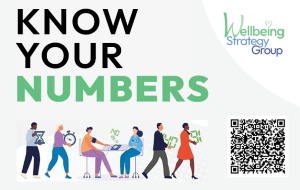This week is Know Your Numbers Week. This is about raising awareness and sharing resources around high blood pressure, a major risk factor for heart disease and stroke.
Here are some of the reasons why everyone should check their blood pressure numbers.
- 1 in 2 strokes and heart attacks are the result of high blood pressure.
- 1 in 3 adults in the UK have high blood pressure.
- 1 in 2 adults with high blood pressure don’t know they have it or aren’t receiving treatment.
- 6 million people in the UK alone have high blood pressure and don’t know it.
- £2.1 billion – that’s how much high blood pressure costs the NHS every year.
Because high blood pressure usually has no symptoms, the first sign of it could be a heart attack or stroke. It can cause kidney disease, dementia, and other illnesses too. But these tragedies can be prevented with medications and lifestyle changes.
Finding out your numbers
The only way to know if you have high blood pressure is to have yours measured. However, a single high reading does not necessarily mean you have high blood pressure. Many things can affect your blood pressure through the day, so you will need to see that it stays high over time.
How is blood pressure measured?
Your blood pressure is usually measured using a blood pressure monitor. This is usually an electronic monitor connected to an inflatable cuff, which is wrapped around your upper arm. When you have your blood pressure measured, the reading is written as two numbers. The first is when the pressure is at its highest (or systolic pressure), and the second at its lowest (or diastolic pressure). For example, your reading might be something like 140/90 mmHg, which you would say as “140 over 90” (mmHg is a unit for measuring blood pressure).
Around Cemex UK many of our offices and sites have blood pressure monitors for you to use to check your blood pressure, your Supervisor should be able to advise where they are located. Check out this useful guide on how to take your own blood pressure reading – click here.
If you don’t have a monitor at your workplace, some pharmacies and GP surgeries also have blood pressure monitors for you to check your blood pressure.
What do the readings mean?
As a general guide:
- Normal blood pressure is considered to be between 90/60mmHg and 120/80mmHg (this applies if it’s measured at home or at a GP surgery or clinic).
- High blood pressure is considered to be 135/85 or higher if your reading was taken at home, or 140/90mmHg or higher if your reading was taken at a GP surgery or clinic.
- Low blood pressure is considered to be lower than 89/59mmHg or lower.
If your reading is between 120/80mmHg and 140/90mmHg, you may be at risk of developing high blood pressure in the future.
There are things you can do to help prevent this, with links to NHS support guides:
- reduce the amount of salt you eat and have a generally healthy diet
- cut back on alcohol
- lose weight if you’re overweight
- exercise regularly
- cut down on caffeine
- stop smoking
Some people with high blood pressure may also need to take one or more medicines to stop their blood pressure getting too high.
You can watch a video about High Blood Pressure and understanding the risks here.
You can also check out the NHS website information about high blood pressure here, and on the British Heart Foundation website here.
Once you’ve found out your numbers – check out the bloodpressure.org website to find out what they mean, and what next steps you might need to take. Click here.
Further Resources
We have shared a number of resources to help you check your blood pressure and understand the numbers.
To access these resources, click HERE or scan the QR code on our poster in the download section of the UK News website here.
- New Leaf Resources
- Guidelines for Blood Pressure Testing
- Know Your Numbers Resources
- Blood pressure chart for adults
- How to check your own Blood Pressure
Please print our poster and share on your workplace notice boards.
